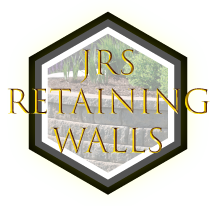Get a free quote
Contact Us
Prized for their strength and versatility, concrete retaining walls require precise construction methods. Cement retaining walls come with a range of diverse applications. Poured concrete retaining walls come in a variety of colors, textures and patterns. Installed properly, concrete retains the most room for customization among any other retaining wall material.
One example of the excellent work we do is constructing walls along highways. These huge, concrete structures are what you see every day when driving on freeways. Watch any of these processes and you’ll get a real appreciation for the skill required to form and pour an accurate wall.
CONCRETE RETAINING WALL PROPORTIONS
Retaining wall construction is more than just structural design. Construction should also take into account how the wall will be built to ensure proper proportioning. Getting the proportions right makes placing the concrete easier, and also leave more room for structural reinforcement.
WHAT IS LATERAL EARTH PRESSURE?
The design of any retaining wall requires knowledge and understanding of the pressure generated by backfill which is lateral earth pressure. To determine the lateral earth pressure on a particular wall design, an engineer needs to know soil parameters.
Once the lateral earth pressures are known, we need to verify that the walls have enough stability. Once the dimensions of the wall are determined, each vertical member is checked for strength and steel reinforcing. The soil bearing capacity of a foundation must also be examined thoroughly to ensure it will not result in failure later.
How thick should concrete retaining wall be?
Base thickness = 1/8 of the height of the wall but not less than 12 inches. Stem thickness = 6 inches + ¼ inch for each foot of wall height.
Which retaining wall is best?
Poured concrete is the most durable option for retaining walls. It may also be carved and formed to look like stone, depending on your taste. Poured concrete walls are the only type of retaining wall that isn’t built to lean against the earth (batter), which is useful if you have little space.
Concrete blocks are another alternative that may be DIY-friendly. Though made of concrete, the blocks usually have a rough face for a quarried look. Masonry retaining walls can be made from brick, stone or concrete blocks. These retaining walls are installed without mortar and should be overseen by a professional mason. If designed properly, they will last upwards of forty years.
Do retaining walls need cement?
All types of retaining walls do not require cement. The most basic of retaining walls, the gravity wall relies on sheer weight and mass to keep soil in place. Since gravity walls get their strength from weight, these retaining walls allow for the widest variety of materials. Sheet pile retaining walls are usually made out of steel, wood or vinyl materials and are driven into the ground.
How long does a concrete retaining wall last?
One major factor that will determine how long you retaining wall lasts is the material. Concrete is a popular material choice for hardscaping due to its durability and cost-effectiveness. A concrete retaining wall will typically last at least 50 years, while a brick masonry wall should be expected to last 100 years plus based on the quality of work. We offer high-quality work, so you can expect your new retaining wall to have great durability.
